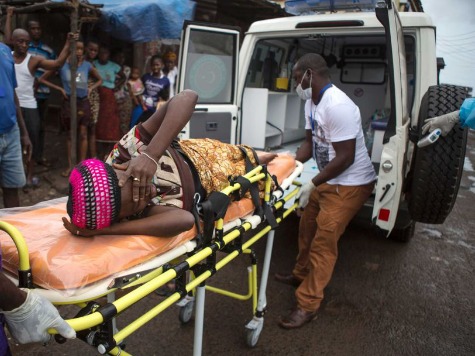Sierra Leone’s Ebola cases are showing no sign of slowing down, no thanks to significant negligence by some working to clear Ebola-stricken areas. The Member of Parliament representing eastern Kailahun, Mustapha Braima, told Parliament that ambulance drivers in the region are neglectful and their actions allow Ebola to spread.
Braima explained particular incidents on October 16, 18, and 21. From The Awareness Times:
He complained that, on the 16th October at Kulla village, an Ebola ambulance was caught waiting for Ebola victims who were clearly showing symptoms of vomiting and frequent stools on the road. The driver was alleged to have waited until the said victims took their bath, changed their clothes leaving the one they were wearing behind and went to the MSF holding and treatment center. He added that, on the 18th October at Jaaima Village the same act was repeated by another Ebola ambulance. Finally, he went on, on the 21st October an Ebola ambulance with registration number AJU 780 was also caught performing the same act at Ngiehun Town, all in the Kailahun district which he maintained has the tendencies of infecting other people. He noted that, such an act is unacceptable and must be stopped henceforth.
Braima demanded that the district’s medical officer implement better standards. He also wants the doctor to “report to stakeholders concerned so that thorough monitoring mechanism strategies will be put in place for such acts not to repeat again.” Ebola started its spread into Sierra Leone through the Kailahun district and has since implemented a number of protocols to stop it from spreading. Braima said the ambulance drivers will “maximize the spread of the virus which does not tell well for the country.” Leaving Ebola-tainted clothing accessible is extremely dangerous.
The Eastern Province is on the border of Liberia and Guinea, the two other countries hit hard by Ebola. The outbreak in Sierra Leone started in Kailahun. Doctors Without Borders set up the largest Ebola treatment center in the city, which was built in three weeks in June. Nurse practitioner Patricia Carrick from Montana, who treated patients in Kailahun, explains health workers “have to assume they do (have Ebola) until proven otherwise.” The survival rate in Kailahun “rose from about 30 percent to more than 40 percent while Carrick was there.” She said everything, including the clothes from the patient, must be destroyed. From The Missoulian:
Blood testing confirms that the virus is eradicated. Survivors shower with a disinfecting chlorine solution. Their clothes are incinerated. Once they recover from Ebola, they won’t contract that strain again – but anything that could be contaminated is destroyed to protect others. MSF provides new clothing.

COMMENTS
Please let us know if you're having issues with commenting.